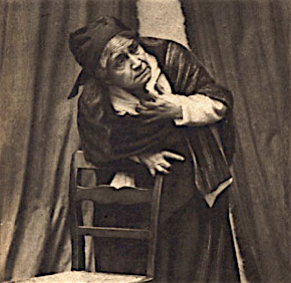
inter alia
6/3/09





Some food/book blogging. I have three meals to comment, two of which are massive failures.
Le verre volé
We’ve been here many times before, and it had some fond memories, especially since we’d been there with Manuel, Nora, Michael and Yasemin. We’ve been back twice since we’ve been here on this trip, and we just went back again with Michael. It sucked. It sucked so hard I have no interest in going back, despite the many prior good experiences there. The food ranged from boring to bad, and adding a little bit of unpleasant seasoning, it was easily the most expensive meal we’ve had there, too. (For the record, the wine recommendations—although pricy, and with no mention of how much the bottles were—were pretty excellent.)
Caviar d’aubergines with white anchovies and curry: I didn’t have this, but those that did inform me that it was a disaster. Three ingredients that had nothing to do with each other, did not speak to each other, and generally refused to get along. One questioned whether the chef had any idea what he was trying to achieve.
Salade d’oreilles de grevot with coriander: Okay, I wanted to order this salad not because I thought it would be good, but because I hoped it would be interesting. Manuel always orders whatever terrifying organs are on the menu, so I should order the piglet ear salad, right? It turns out ears, served cold with a little vinaigrette, are terrible. They don’t taste bad, but they’re just hard, crunchy little bits of cartilage. I expect ears can be made delicious, or at least interesting. These were hard bit of cold hardness, tasting faintly of vinaigrette.
Crostade with goat cheese, salmon caviar, and radishes: This was embarrassing—a large piece of toasted bread covered in a thick layer of goat cheese, caviar on top, and pointy radishes stuck in the mess in a row. It was clearly designed to resemble a birthday cake—white and orange frosting, and fat pink candles. The goat cheese was almost flavorless, and somehow, so was the caviar.
Terrine de paté de campagne: This was okay. And our main courses were pretty solidly good, a veal and a jambonneaux. I was getting ready to forgive and forget when my dessert, a peach tart, arrived. It was made with the unpleasantly and aggressively strong-tasting whole wheat flour I’ve ever had—so strong it obliterated any hint of peach. I might as well have eaten a whole wheat crust on its own and gone home.
Le petit verdot
This was the second time we;ve been. Both times, everything was perfect. Everyone had the lunch menu.
Caviar d’aubergines et courgettes with merguez en salade: I believe this is a kind of deconstructed spaghetti alla carbonara. The courgettes were somehow turned into spaghetti—not only the same size and shape, but the consistency of perfectly cooked spaghetti al dente. The merguez stood in for the pancetta, and the eggplant had simply been turned into a rich and creamy (with a hint of piquant) sauce underneath. And some salad.
Echine de cochon noir with something that was “acidulé”: There was some general concern over the word “noir” (is this related to the dreaded boudin noir?), but a cochon noir appears to be a kind of pig. What kind of pig? A tasty kind of pig. They don’t ask you about the cuisson (the degree of doneness) of your meat at the Petit verdot, because it will be cooked perfectly.
The chocolate mousse with raspberries was also perfect, with a dollop of straight cream on top, and everything covered over with crumbled bits of pastry and then raspberries. There are many things to like about Le petit verdot, but one of them is that portion sizes are ideal. This is a place where you can get the full lunch menu, eat everything, be completely satisfied, and not be overfull.
Unnamed restaurant near the Eiffel Tower
My friend Kristin is visiting. Her daughter Sailie has terrible food allergies (milk and all milk products, peanuts, eggs, all nuts). You already know the story: “does this have milk in it?” “Why no, of course not, madam!” An hour later, “I am so sorry, madam. Yes, it does have milk in it.” Fortunately, milk products “just” make Sailie terribly sick for hours, and no longer send her into anaphylactic shock. This isn’t a French problem, by the way. In the States, Kristin learned that she had to tell the waiter that, if they served her milk products, her daughter would die—that was the only way to get people to take the allergy seriously and actually check to see if it did. I am pleased to say that their second day in Paris seemed to go much better, although a few spots were closed for the big memorial for the passenger and crew of the Air France flight—we took them to Notre Dame (which is where the service was), Berthillon ice cream (sorbet for Sailie, of course), Vietnamese food, Luxembourg gardens and dropped them off at the Louvre.

By chapter 26 of Therese Raquin, all I want—sincerely—is for all of the characters to die. They lounge about, either being lazy, terrified, weepy or dumb, and apparently do nothing. Somehow, this book has been adapted for film and television a dozen or more times, twice for an opera, and once for the Harry Connick Jr. musical, Thou Shalt Not. With this hot cover (see right). The novel is French, which is another of saying that it involves adultery.
I have learned from reading the Wikipedia entry on Thou Shalt Not that it is possible to “rupture a vocal cord.” That is a horrible, horrible idea that I hope to never learn anything more about.

Three meals and a book
ACk!
You have given me milk! And pig ear salad! I am dying! (Actually Giacinta Pezzana in a stage adaptation of Thérèse Raquin in 1879—look how I tied my themes together!)






